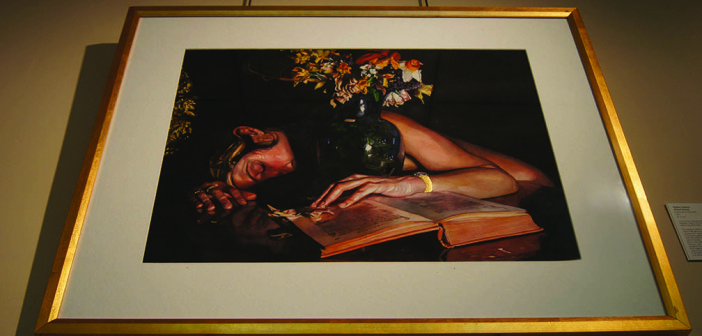Three of the pieces in student Ian Mitchell Wallace’s recent exhibit “Fructus mysticalus” in Oesterle Library were recently denied exhibition by North Central College. Gallery director Nickole Lanham says the pieces were “outside of the college’s comfort zone.”
Wallace’s watercolor exhibit has sparked some questions of what exactly censorship is and how it should be handled when it comes to student art on a private campus.
His exhibit included nudes, some of which featured exposed breasts, spread legs and pubic hair. According to Wallace, all the pieces have educational purposes. When displayed in Oesterle, they all had wall labels with explanations of each piece.
Why, then, were three of the pieces turned away? The question is whether it was an act of censorship, or the contractual obligation between artist and gallery.
Censorship is the suppression of the unacceptable. This is controversial not only at NCC, but also throughout America. The U.S. is considered in the middle level when it comes to determining what is unacceptable.
Wallace said that all of the pieces of art in the collection were pre-approved. The planning of the exhibit began about eight months in advance. However, two days before the exhibit was put up, three pieces were turned away, and not accepted into the gallery.
“I think someone was offended,” said Wallace. “There is no concrete system for what is acceptable, and what is not.”
However, Lanham said, “The college does not see this as a censorship issue, but a contractual issue. The gallery contracts state that all works are displayed at the discretion of the gallery director.”
Furthermore, the college has the right to exclude or remove any work prior to or during an exhibition at any time. “This is not a question of censorship, but rather exercising our option to which pieces are, and are not, shown in the college facility,” Lanham said.
Steve Macek, professor of speech communication and coordinator of urban and suburban studies, said he expected more from the exhibit, given what he had heard about it. He expected paintings that were more “provocative, outrageous or transgressive.” Macek said that these pieces were no more erotic than exhibits in a typical art museum or gallery.
“The pictures that were taken down seem incredibly tame by contemporary standards,” Macek said. “I’ve seen more scandalous images on billboards along the highway, to be completely frank.”
Wallace said that he took all of the proper measures to avoid controversy with his exhibit, including meeting with Lanham bimonthly leading up to the opening, giving updates on the work while it was in progress, as well as having the art undergo review before the opening.
Two other pieces that also might have been viewed as offensive were hung up in the gallery, veiled with red draping.
Wallace said his goal was to produce art that avoids the “suppression of sexual expression,” and to “challenge the public’s perfunctory definition of obscenity.
“Negative clamor was raised over this pair of paintings, acting as precedent for the newly sexually liberated woman from her typically passive role,” Wallace said.
He added that the paintings were “outside the usual rules” of model composure. “In my split-screen rendition, the same bold gaze at the viewer, unabashed pose, and depiction of pubic hair serve as a parallel to another form of liberation that exists today on the Web,” he said.
Lanham said she wants to expand the mindset of students across campus with art such as Wallace’s, but also wants to keep within North Central’s comfort zone.
“I love Ian’s work,” said Lanham. “I wouldn’t have brought him here if he wasn’t brilliant.”
Macek said, “In academia, I think we ought to err on the side of being too permissive and allowing too much latitude for expression, rather than on the side of being too repressive or restrictive.”
According to Macek, “the only expression that should be ruled off limits in a college or university is expression that intentionally causes harm or interferes with a student’s right to learn or a professor’s right to teach.”

